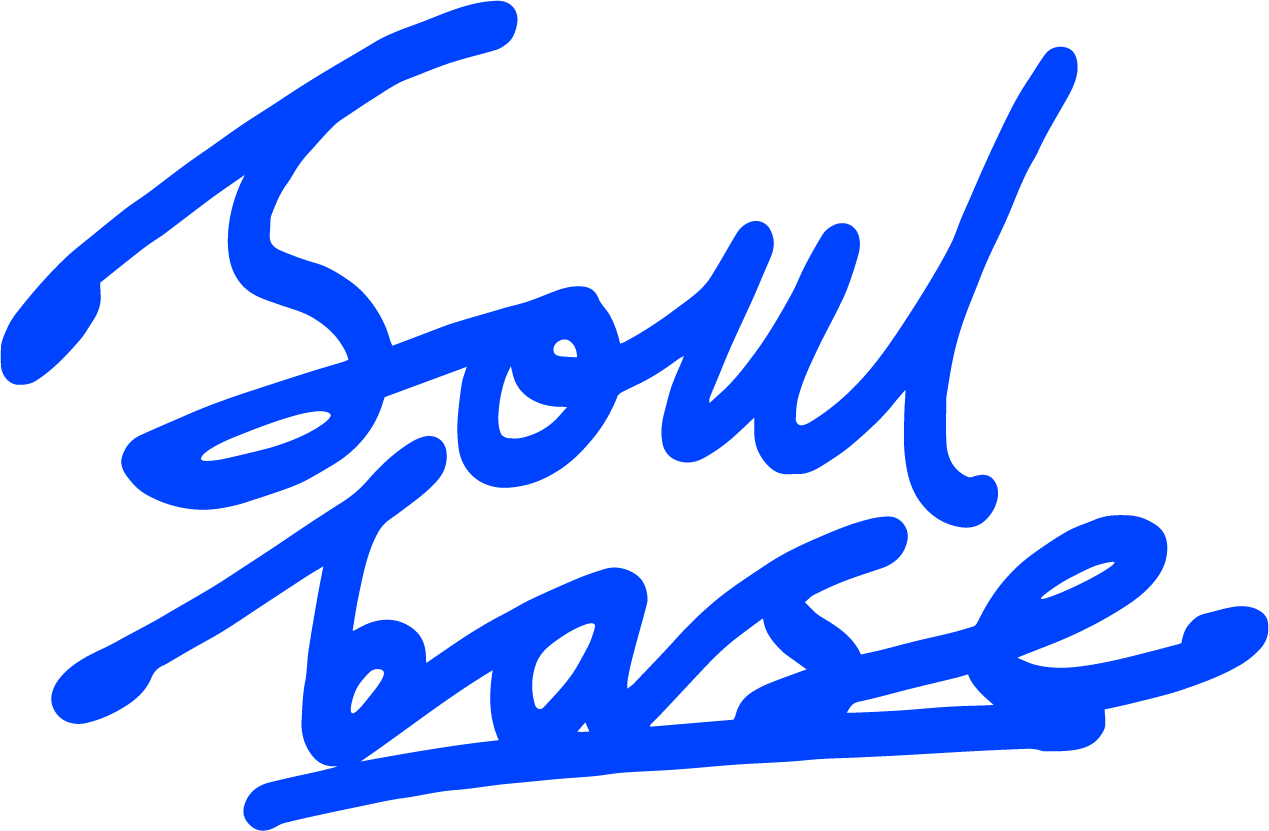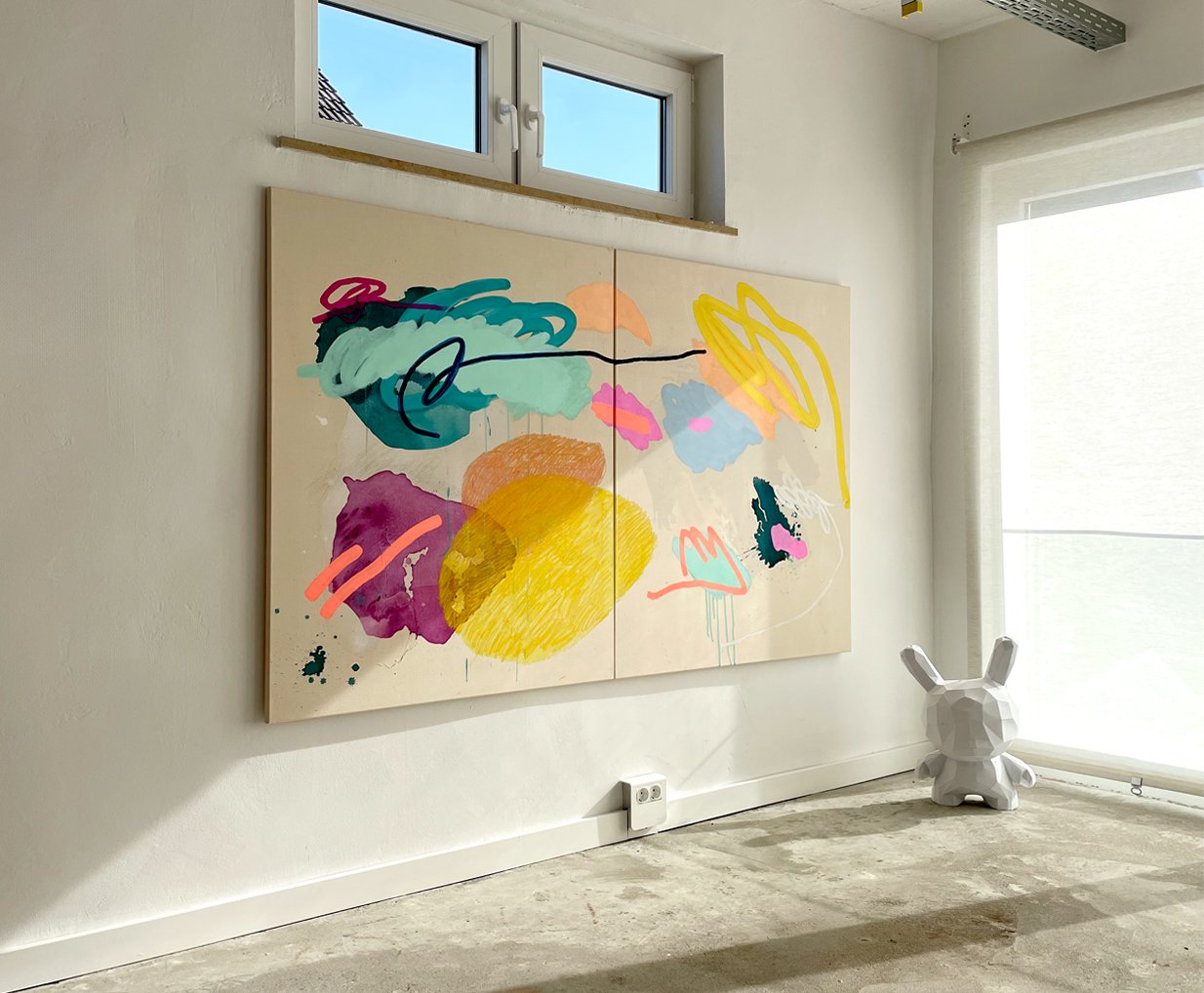Anna Kalinitschenko
Self-Taught Abstract Artist Redefining Creativity in the Digital Age
In the art world, there are some artists who just resonate with you. Is it their creativity, their color palette or perhaps an intuition, feeling or emotion that draws us to them? This connection can be quite obvious in a physical space, but does this same resonance translate online? Can art evoke the same emotions through social media and digital content?
Anna Kalinitschenko’s art answers this question perfectly. Her vibrant color palette uplifts the viewer’s mood, and each new series she releases captivates and evokes feelings of joy, inviting the audience to imagine the artwork in their own space. With her large-scale paintings, one might expect her primary sales channel to be galleries. However, Anna proves otherwise — her main selling platform is online.
We were fortunate enough to speak with Anna about her self-taught career, her vision for her paintings and her decision to use social media as her primary way of connecting with customers and her community. We can guarantee that reading her story will brighten your day.
Imagery by: Anna Kalinitschenko
How would you describe your artistic style, and what inspires you most when creating your works?
My artistic style is a blend of expressionism and abstraction. I use bold, vibrant colors and dynamic lines to create emotional depth. My work focuses on creating an uplifting mood. I work with various media, such as acrylic paints, pigments, inks and lots of water. I dilute the colors with water to allow the paint to flow naturally, giving the color fields a light transparency. This technique often leads people to compare my art to watercolor painting.
I am greatly inspired by the colors in my environment — whether from a book or magazine, fashion, flowers or nature. When I see these color combinations, I feel happiness and excitement, and I aim to capture that feeling and express it in my work.
What role does color play in your artwork, and how do you decide which colors to use?
Color plays a central role in my artwork. I have a special instinct for combining colors in ways that evoke positive emotions. I begin with a color that brings me joy at that moment and then develop the composition over several sessions. Often, days or even weeks will pass between layers. Only when the next creative impulse comes do I know which color the artwork will receive next, and that's when I continue working on it.
What do you want viewers to feel or think when they see your art?
My goal is to bring viewers joy and excitement. I want to remind them of the beautiful moments in life, inspire good thoughts and convey a sense of vitality. My art should serve as a symbol that helps break negative thought cycles whenever we get caught in them. Positive thoughts create a positive reality — that’s the message I want to convey through my work.
How has your personal life journey shaped your artistic development?
I discovered my creative side early on, and throughout my life, I’ve continued refining it in various fields. Whether with a brush, needle or camera, I love working with my hands and always find new creative projects that bring me joy. As a self-taught artist, I’ve taught myself many skills, such as sewing and photography. These self-learning processes have given me strong self-confidence. I’m not afraid to try new things, even if it means making mistakes along the way. I enjoy the creative process because I know that something valuable will emerge in the end. This freedom to experiment without fear of failure is, for me, the true essence of creativity — a journey that is always enriching and inspiring.
What originally motivated you to pursue a career in art?
I have been working independently as a visual designer since 2009. In 2017, I began painting on canvas, first as a hobby. Over time, I accumulated a stack of completed paintings. When the pandemic started, it began to bother me. I wanted to make space, so I communicated in various ways that I wanted to give away my artwork — and the interest was huge. That was extremely motivating. Realizing that my art could bring so much joy to others was simply overwhelming.
Especially during that time, I often reflected on the meaning of life. My intuition and love for art strengthened my belief that the purpose of my life is to bring people joy with my art and touch them in a positive way. Around two years ago, I started renting a studio to create a clear separation between work and home and to have more space for my larger works.
Your artworks often explore emotions and inner worlds. How do you approach depicting feelings in your paintings?
Creating is an entirely intuitive process for me. I don’t follow a fixed plan; instead, I let my emotions guide me. I thoroughly enjoy working with bright colors to express positive emotions and pass them on through my art. To preserve this positive energy in my work, I only work on them when I am in a balanced and good mood. It’s crucial for me that this harmony and joy of life are reflected in my creations.
What role does nature play in your work, and how do you incorporate it into your art?
Everything is nature — I am part of it, and our emotions are natural as well. I create my art on raw cotton canvas and consciously allow the natural tone of the fabric to show through. My heightened perception of the world enables me to experience the beauty around us intensely — whether it’s the colorful animal and plant life, awe-inspiring natural phenomena like rainbows, purple clouds, sunsets or the clear turquoise of water. These visual impressions flow naturally into my art and express the beauty of nature in an abstract way.
How do you handle creative blocks, and what motivates you to keep going in challenging times?
Creativity can’t be forced. From my years of experience in design, I know these phases well. I use these times to take care of tasks that I rarely find time for, such as tidying my studio — a necessary task that helps me clear my mind. There’s always something to do in marketing as well: photographing artworks, digitizing them, preparing social media posts. All of this is just as important and contributes significantly to my success. Therefore, I don’t see these phases as a loss, but rather as a valuable and necessary part of my creative process.
As an artist, you are constantly creating. How do you deal with phases where your creativity is blocked or restricted?
In those moments, I turn to other tasks because I know that life moves in cycles — always up and down, day and night, warm and cold. Everything has its time, and with trust, I embrace this rhythm. The more I accept it, the quicker my energy returns. In the meantime, I handle other important tasks.
What is your opinion on how social media is changing the art world? Do you see it more as an opportunity or a challenge for your artistic career?
From the very beginning, I saw it as a great opportunity. Since I didn’t follow a traditional path through art school, I lacked the necessary contacts in the art scene. But through Instagram and other platforms, anyone has the opportunity to make themselves visible. My skills in visual design and marketing help me create engaging content and grow my reach. Without social media, my art would probably still be stored away, unseen.
Do you sell most of your artworks through social media, or do you see galleries and exhibitions as the main platforms?
I enjoy selling my art myself and therefore don’t work with galleries. Thanks to my good reach on Instagram, it’s been working quite well so far. I believe that, as an artist, I can best represent my works myself. I have full control over external communication, am not tied to contracts and can set my own prices. This gives me a lot of freedom and enjoyment.
How does the digital world, especially social media, affect your relationship with collectors and art enthusiasts?
The interaction on Instagram creates closeness. I appreciate every message and every comment under my posts. It brings me great joy to inspire others. For many, purchasing an artwork directly from the source is a special experience, and I greatly value the direct contact with my customers. With some, even a friendship develops, as art is a means of communication — a language that connects people.









